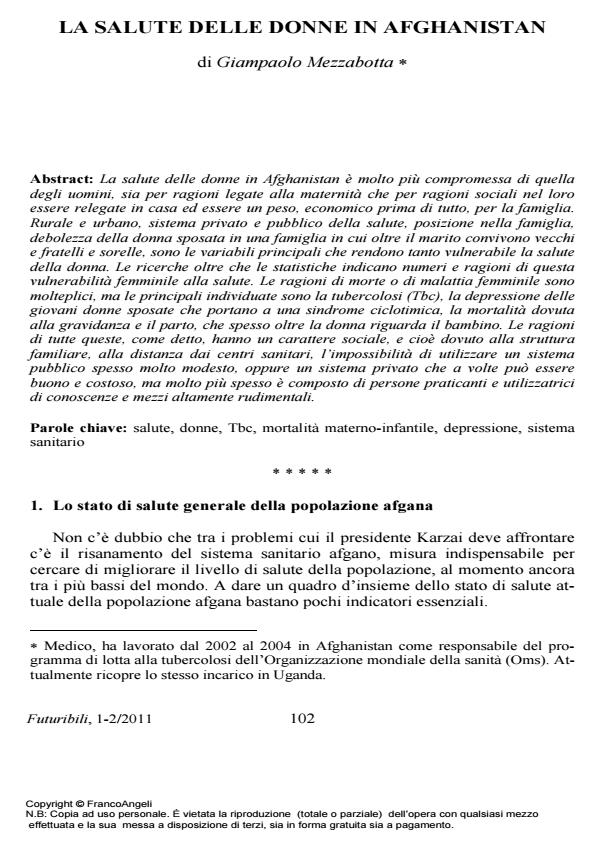Women’s health in Afghanistan
Journal title FUTURIBILI
Author/s Giampaolo Mezzabotta
Publishing Year 2011 Issue 2011/1-2 Language Italian
Pages 13 P. 102-114 File size 274 KB
DOI 10.3280/FU2011-001008
DOI is like a bar code for intellectual property: to have more infomation
click here
Below, you can see the article first page
If you want to buy this article in PDF format, you can do it, following the instructions to buy download credits

FrancoAngeli is member of Publishers International Linking Association, Inc (PILA), a not-for-profit association which run the CrossRef service enabling links to and from online scholarly content.
The health of women in Afghanistan is considerably more parlous than that of men, partly owing to factors related to maternity and partly because of their social position of confinement to the home and being a burden - primarily financial - to their families. The vulnerability of women’s health depends largely on whether they live in the country or in towns, access to private or public healthcare, their position in the family and the weakness of married women living not only with their husbands but with older relatives, brothers and sisters. This portrait of women’s health is based on research as well as official statistics. There is a range of causes of female death and illness, but the main factors are tuberculosis, depression in young married women leading to a cyclothymic syndrome and death in pregnancy and childbirth, which often claims the child as well as the mother. All of these causes are rooted in social factors: the structure of the family, distance from healthcare centres, the inability to use public health services, modest though they are, and a private system which in some cases is costly and of a decent standard but is more often manned by staff whose expertise and equipment is highly rudimentary
Keywords: Salute, donne, Tbc, mortalità materno-infantile, depressione, sistema sanitario
Giampaolo Mezzabotta, La salute delle donne in Afghanistan in "FUTURIBILI" 1-2/2011, pp 102-114, DOI: 10.3280/FU2011-001008